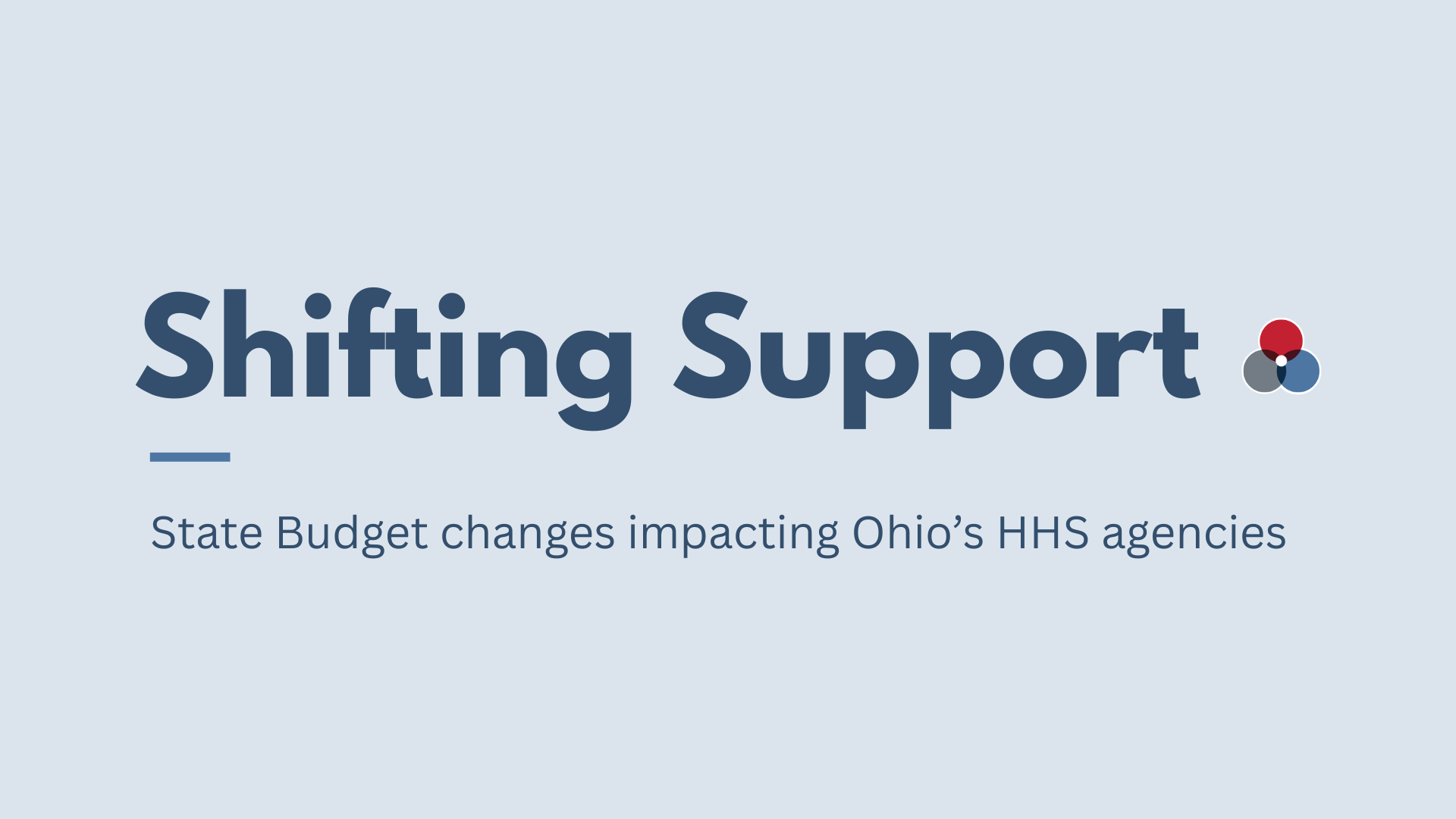Introduction
The Center for Community Solutions strongly believes in the importance of Adult Protective Services (APS). We covered the rollout of statewide APS changes, as well as senior levies that are in place across Ohio. The role of APS is particularly significant since legislation passed that increases the number of professions required to report instances of elder abuse to authorities. Recent legislation also expanded the definition of exploitation and broadened the types of reports for APS to investigate. Policymakers and advocates will benefit from examining the need for APS, identifying the funding levels and current public policy, and considering whether APS funding is adequate to meet the need of a vulnerable population.
Policymakers and advocates will benefit from examining the need for APS.
It is commonly known among professionals working in the field of aging that social isolation contributes to the likelihood of experiencing elder abuse. As the social networks of older adults weaken, social isolation becomes a reality for many. Strengthening social ties of Ohio’s older population can be a measure to prevent elder abuse, but unfortunately it cannot eliminate it entirely. Not all older adults will be victims of elder abuse, but survivors benefit from supportive systems that provide assistance getting help, healing and restoration. Without intervention, survivors of abuse may be subject to negative health consequences including declines in physical and mental health. Survivors of elder abuse are 4 times more likely to be admitted to a nursing home and 3 times more likely to be admitted to a hospital.[1] Fortunately, there have been several steps forward in recent years both in public policy legislation, as well as funding support, which have resulted in more support for APS. From increasing the number of mandated reporters, to the codification of the Elder Abuse Commission, Ohio has taken incremental steps to strengthen Adult Protective Services.
Without intervention, survivors of abuse may be subject to negative health consequences including declines in physical and mental health.
Current funding
As with most human-service orientated programs, government funding is necessary to provide the investigations and interventions associated with APS. Since 2016, each county in Ohio has received approximately $31,000 to allocate towards APS. Some counties choose to supplement this allocation with additional funds from senior and health and human service levies. Counties may also choose to combine youth and adult protective services as a way to stretch funding. A promising trend in the state’s commitment to APS was an increase in funding of $100,000 per year in the 2017-2018 biennium budget.

[/cmsmasters_text][/cmsmasters_column][/cmsmasters_row][cmsmasters_row data_width="boxed" data_padding_left="3" data_padding_right="3" data_top_style="default" data_bot_style="default" data_color="default" data_bg_position="top center" data_bg_repeat="no-repeat" data_bg_attachment="scroll" data_bg_size="cover" data_bg_parallax_ratio="0.5" data_padding_top="0" data_padding_bottom="50" data_padding_top_laptop="0" data_padding_bottom_laptop="0" data_padding_top_tablet="0" data_padding_bottom_tablet="0" data_padding_top_mobile_h="0" data_padding_bottom_mobile_h="0" data_padding_top_mobile_v="0" data_padding_bottom_mobile_v="0" data_shortcode_id="33tuboj864"][cmsmasters_column data_width="1/1" data_bg_position="top center" data_bg_repeat="no-repeat" data_bg_attachment="scroll" data_bg_size="cover" data_border_style="default" data_animation_delay="0" data_shortcode_id="ydw3dhqlih"][cmsmasters_button shortcode_id="ovjwf52o64" button_link="https://comsolutionst.wpengine.com/wp-content/uploads/2019/04/51319-APS-paper.pdf" button_target="self" button_text_align="center" button_font_weight="default" button_font_style="default" button_text_transform="default" button_border_style="default" animation_delay="0"]Click here to download the report![/cmsmasters_button][/cmsmasters_column][/cmsmasters_row][cmsmasters_row][cmsmasters_column data_width="1/1"][cmsmasters_text]
Policy changes
In addition to increased funding, the state has, to its credit, made several legislative changes that have changed the approach to APS. A few of the highlights:
- Added to the list of individuals who, having reasonable cause to believe that an adult is being abused, neglected or exploited, or is in a condition resulting from abuse, neglect or exploitation, must immediately report that belief to the county department of job and family services
- Codifies the Elder Abuse Commission
- Define core minimum APS program requirements statewide
- Implement a state APS hotline
- Implement a statewide APS data collection and reporting system
- Increases the penalties for theft from a person in a protected class, misuse of credit cards, forgery, forging identification cards or selling or distributing forged identification cards, securing writings by deception or identity fraud against a person in a protected class, if the victim of any of those offenses is an elderly person
- Modifies information released to the state APS IT system
- Notifies an adult’s closest relative of a report in the event of a court order
- Permits county prosecutors to petition the courts for orders involving APS
- Provide a one-time APS innovation fund to encourage multidisciplinary collaboration and build system capacity to meet core minimum requirements
- Provide one-time all-system training aligned to meet core requirements
- Provide one-time APS planning funds for counties to meet core requirements
- Requires APS to notify law enforcement if APS officials believe an individual may be criminally exploited
- Requires the Attorney General to distribute public awareness publications that provide general information on elder fraud and financial exploitation
- Requires the Directors of Aging, Commerce, Job and Family Services and the Attorney General to develop best practices and standards for preventing elder fraud and financial exploitation and to ensure resources are available to victims
Data
Experts within the field of aging services largely agree that elder abuse is widely under-reported. Many of the legislative changes highlighted aim to bring forward more reports of the abuse many suspect are occurring. With additional professionals trained to look for the signs of abuse and mandated to report, we would expect to see a bump in reports of elder abuse. Data provided in the Ohio Department of Job and Family Services’ APS fact sheets shows an increase in 2018 in overall reports of abuse for adults aged 18 and older in 2018. However, the number of reports for those aged 60 and older decreased in 2018. In past years, total cases and cases involving those 60+ were closely aligned.
Before 2018, counties recorded and tracked their data independently and provided the data to the state.
It is also interesting to note that in 2018, reports for abuse and exploitation nearly doubled while reports of neglect decreased from the previous year. These data blips may be a result of the new statewide reporting system. Before 2018, counties recorded and tracked their data independently and provided the data to the state, 2018 marked the start of a statewide system where all counties report to the same system in an effort to have uniform data collection and real time data for the state to analyze. Some counties across the state still have not entered data into this system, as the new reporting mechanism came in the midst of many other changes to the APS system. It is not uncommon for unusual data points to emerge during these types of data tracking transitions. As counties continue to use the system and the state makes adjustments, we expect the data to stabilize and become a reliable measure of activity at the county and state levels. Improving reporting of this data is a state priority over the next year.


A further indication of some level of unreliability of the statewide reporting system is the marked decrease in the percent of individuals who were determined to need services. In 2018, of the individuals with an APS report, just 23 percent were determined to be in need of service. This is a dramatic decrease from the previous year when 41 percent needed services and from 2013 when 50 percent needed services. Although increased mandated reporting could bring new reports from community members who may suspect abuse but have less experience reporting cases, which could lead to a decrease in cases with actual need, it is unlikely that we would see this large of an impact less than one year into a policy change. The state should review county-level data reporting closely to determine if changes are needed system wide or additional training should be made available on how to use the reporting tools.
The state should review county-level data reporting closely to determine if changes are needed system wide or additional training should be made available on how to use the reporting tools.
Aging increases statewide
In 2015 there were 2.6 million Ohioans ages 60 and older, by 2030 there will be 3.37 million. This represents a 30 percent increase in the older adult population. Increased population paired with legislative changes aimed to encourage increased reporting begs the question, ‘is there enough funding to meet the need?’ The National Association of Adult Protective Services Administrators suggests an APS investigator should carry no more than 25 cases per month. With 19,492 cases of abuse reported in 2018, the appropriate number of caseworkers to investigate and follow up would be about 64 full time employees. With approximately $33,000 going to each county, counties with less than 25 cases per month may be able to cover their APS staff needs to receive and investigate reports with a part-time caseworker and find the state allocation adequate. However, more populous counties and those that provide outreach, education and training on elder abuse in the community will likely experience higher caseloads and find their current state allotment to fall short of their budgetary needs.
Older adults who experience elder abuse are a population that benefits from the intervention of government services and protection from their abusers. APS is designed to provide older adults, their families and caregivers a place to turn when abuse happens, and when adequately funded, it works. As the statewide APS reporting system becomes more reliable, the needs of individual counties will emerge. The state should carefully consider data provided by counties and increase allocations to those counties with high reporting volume so that every county can achieve the recommended best practice of no more than 25 caseloads per APS caseworker.
[1] https://www.justice.gov/file/852856/download
**Brie Lusheck, former Public Policy Associate, also contributed to this report
[/cmsmasters_text][/cmsmasters_column][/cmsmasters_row]








